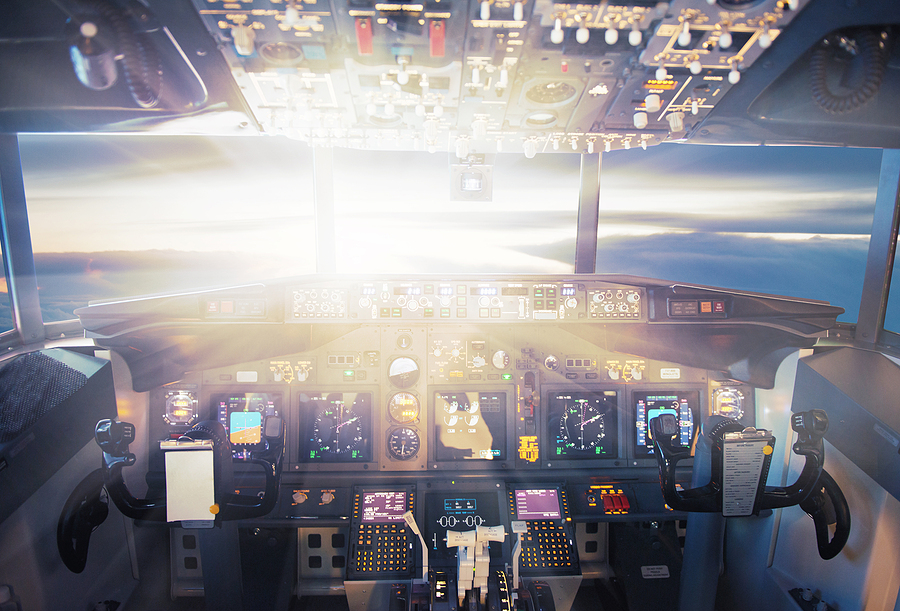“My eyes aren’t good enough to be a pilot.” I’ve heard similar statements from would-be pilots more times than I can count over the past few decades.
Another variation on that theme comes from seasoned aviators who work themselves into fits when they can’t make out the 20/20 line on an eye chart.
Distant Vision Standards
The reality is that the FAA doesn’t even set a limit for how bad your vision can be without glasses in order to fly. The common belief that you have to decipher the bottom line of the eye chart in order to become a pilot or maintain your FAA medical certificate is a misnomer.
For commercial pilots or those applying for 1st or 2nd class certificates, your distant vision needs to be good enough to read the 20/20 line at your AME’s office, but you get to wear glasses or contacts in order to meet that standard. For a 3rd class certificate, as long as your lenses correct your vision to 20/40 or better, the FAA is happy to keep you in the air.
Near Vision Standards
What if, despite your robust hairline and youthful exuberance, you’ve started to hold restaurant menus at arm’s length in order to make informed decisions about your meal or just opt to trust the waiter’s recommendation to avoid notice?
As people, even pilots, age into their late 30s and beyond, it’s very common to develop difficulty focusing on objects within a foot or two of the eye. Termed presbyopia in medical-speak, this phenomenon is related to the gradual hardening of the lens that occurs as a normal part of aging.
Pride and convenience notwithstanding, a few dollars at your local drug store will solve your problems at your favorite restaurant and at your next FAA medical exam. A pair of reading glasses are perfectly acceptable in either setting and as long as you can read the 20/40 line while wearing them, your medical certificate is safe for whatever class you’ve applied for. Pilots over 50 need to pass an additional intermediate distance vision test, but I’ve yet to see anyone struggle with that.
The rule of thumb for FAA visual acuity standards is similar to one I’ve expressed in other posts: if you think you’re safe to fly, you’re probably right. Just make sure you have a current prescription and remember to bring your glasses with you to your AME appointment.
Color Vision History
Let’s start with the published standard. 14 CFR Part 67 uses the same phrase to define color vision requirements to obtain any medical certificate. Pilots must have the “ability to perceive those colors necessary for the safe performance of airman duties.” Wouldn’t it be nice if you AME just asked you to make a self-assessment?
Unfortunately, there’s no office-based test that can truly make that determination. Historically, the FAA allowed pilots to be tested using 19 different color vision tests. With a few exceptions, those tests measured color vision on the not-so-precise normal-not normal scale [1]. The logic seemed to be, if you can see every color, you’re bound to spot the important ones.
Pilots who passed any of the 19 color vision tests were cleared to fly without limitations.
AMEs could still issue 3rd class medical certificates to pilots who couldn’t pass any of the tests, but were required to include the restriction “Valid for day visual flight rules (VFR) only.” That restriction could be removed by passing a ground-based Operational Color Vision Test (OCVT) with an Aviation Safety Inspector or Aviation Safety Technician.
Those who desired a 1st or 2nd class certificate were then required to pass an airborne Color Vision Medical Flight Test to remove any color vision restriction whatsoever [2].
Not only was that process cumbersome to administer, it lacked objective standardization and precision.
Current Color Vision Standards
As of January 1, 2025, color vision standards changed dramatically. The current FAA color vision standards are much easier to administer and incorporate well validated scientific data [3].
The fundamental aspects of the updated standards are these [4]:
- Pilots whose most recent medical certificate DOES NOT contain a color vision restriction are exempt from further color vision testing
- The FAA now recognizes only three computer-based color vision tests:
- 1) The City Occupational Colour Assessment & Diagnosis (CAD; AVOT-PRO-US)
- 2) The Rabin Cone Test
- 3) The Waggoner Computerized Color Vision Test
- First time FAA medical certificate applicants must pass one of those approved tests to be eligible for an unrestricted medical certificate
Some pilots with medical conditions or medications affecting color vision may require periodic testing.
For everyone else, color vision standards are much easier. 99% of current pilots will never have to do another color vision test and new pilots will only be required to do one in their entire career.
There will still be some new pilots who cannot pass one of the newer tests, but about 35% of color vision deficient applicants should be able to qualify for FAA medical certification. For those who receive the “valid for day visual flight rules [VFR] only” limitation, which is the newer version of the dreaded “not valid for night flying or by color signal control” restriction, the OCVT and Color Vision MFT may continue to exist. However they will be offered on a more restrictive case-by-case basis and they have an uncertain long term future.
Practical Tips For Your FAA Vision Test
If you struggled to make out a few letters during your last FAA medical or have any suspicion that your vision may have declined, take a proactive approach. Schedule an appointment with your eye doctor before you schedule an appointment with your AME to make sure your vision still meets FAA standards. If you aren’t easily meeting the requirement, get a set of glasses.
You can also get a copy of your eye doctor’s clinical note or have them document your exam on FAA form 8500-7. As long as your formal vision test was within 90-days of your AME appointment, your AME can use your eye doctor’s notes in lieu of checking your vision themselves.
First Time Applicants
For first-time applicants, the same basic advice applies to color vision standards. Because color-vision testing is seldom required, not all AMEs will even have testing equipment. Do some research online before your appointment to make sure you schedule your exam with an AME who can actually do your color vision test.
If you think you might struggle with the color vision tests, don’t find out for sure at your certification exam. Find an eye specialist who has one or more of the FAA-approved tests and get evaluated before you schedule an AME appointment. As with visual acuity testing, AMEs can accept proof of a successful test from another doctor to satisfy your FAA-certification requirement. Pilots who cannot find a local AME with one of the approved color vision tests can also use this technique.
When it comes to your vision test at your next AME exam, the right preparation can reduce your level of apprehension and make the process smoother. Treat your FAA medical like a check ride by giving it the attention it deserves.
Related reading: CACI for Glaucoma
References:
[1] D. J. Monlux, H. A. Finne, and M. B. Stephens, “Color blindness and military fitness for duty: a new look at old standards,” Mil. Med., vol. 175, no. 2, pp. 84–85, Feb. 2010, doi: 10.7205/milmed-d-09-00171.
[2] “Flight Standards Information System (FSIMS).” Accessed: Aug. 20, 2021. [Online]. Available: https://fsims.faa.gov/PICResults.aspx?mode=EBookContents&restricttocategory=all~menu
[3] J. Barbur, M. Rodriguez-Carmona, S. Evans, and N. Milburn, “Minimum Color Vision Requirements for Professional Flight Crew, Part 3: Recommendations for New Color Vision Standards,” p. 50, Jun. 2009.
[4] “Guide for Aviation Medical Examiners | Federal Aviation Administration.” Accessed: Dec. 29, 2024. [Online]. Available: https://www.faa.gov/ame_guide





